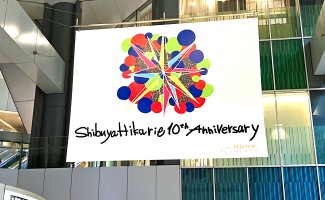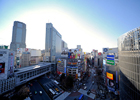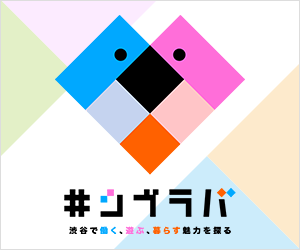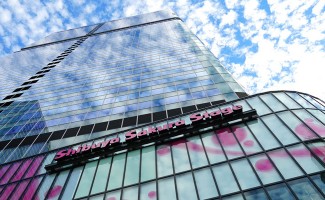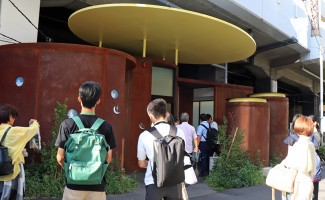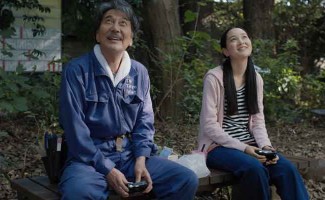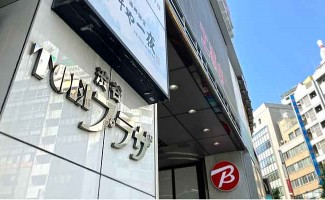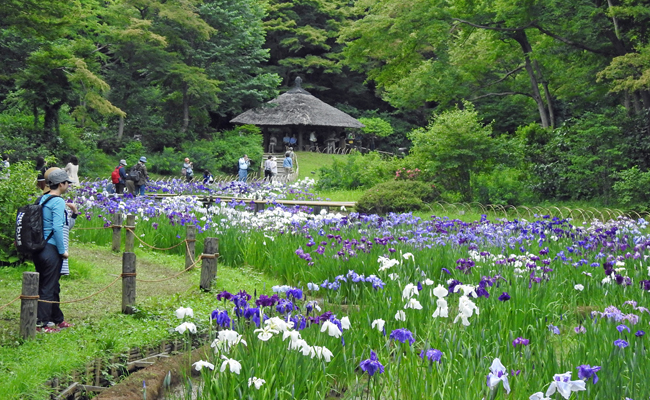
Recommended is June, where the original scenery of Japan remains, "Meiji Jingu Gyoen", flowers and lotus flowers.
When you say "a city oasis," you feel a bit cheap. However, "Meiji Otaki" in Meiji Jingu is a spot that is perfect for the expression, with the good old Japanese landscape. So, this time, I would like to introduce the charm of "Meiji Jingu Gyoen".
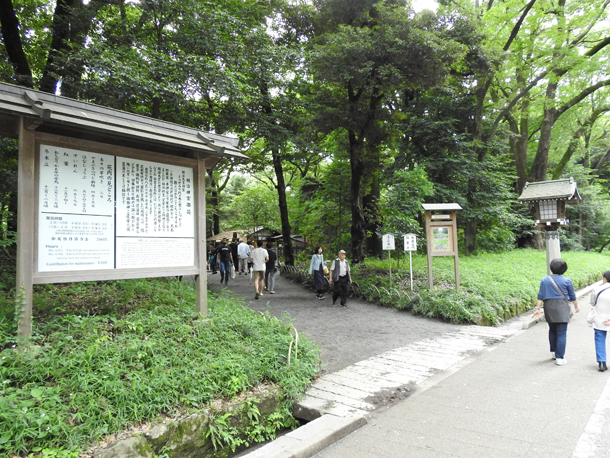 付 近 Near the north gate entrance of Meiji Jingu Shrine
付 近 Near the north gate entrance of Meiji Jingu Shrine
Even if you know Meiji Jingu originally, there may be a large number of people who do not know "Meiji Jingu Gyoen". The place is close to the shrine of Meiji Jingu, and there is an entrance to the north gate of Ontake on the way from Otorii to the shrine. Originally this land was the Kato family in the early Edo period, and then it was the garden of the Ishii family's lower house, and it became a residential area under the jurisdiction of Miyauchi province after the Meiji Restoration and was called "Yoyogi Gyoen." Because of Princess Akinori who liked the nature and scenery of this land, the Meiji emperor planted the tea room "Sukuun Tei", "Sui A (Azumaya)" with a thatched roof, and a flower bud in the Shonai It is said that he made "Shibata" and so on. In addition, for the disease-prone Queen Mother, she sewn the space between Kumasu to make it possible to exercise a little, and set up a promenade with a narrow path, making it known as a beautiful garden full of thought for the Queen Mother. It is done.
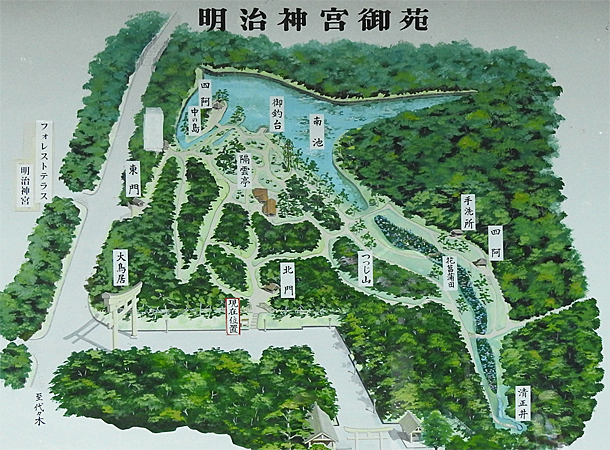 As you can see if you look at the map, the most distinctive feature of Shonai is the waterfront space of the "Minami Pond" and "Shibata". "Shobu-da" which pulled out the water from the popular "Kiyomasa-no-Ido" which is popular as a power spot these days, and then flows into "Nanchi" from there.
As you can see if you look at the map, the most distinctive feature of Shonai is the waterfront space of the "Minami Pond" and "Shibata". "Shobu-da" which pulled out the water from the popular "Kiyomasa-no-Ido" which is popular as a power spot these days, and then flows into "Nanchi" from there.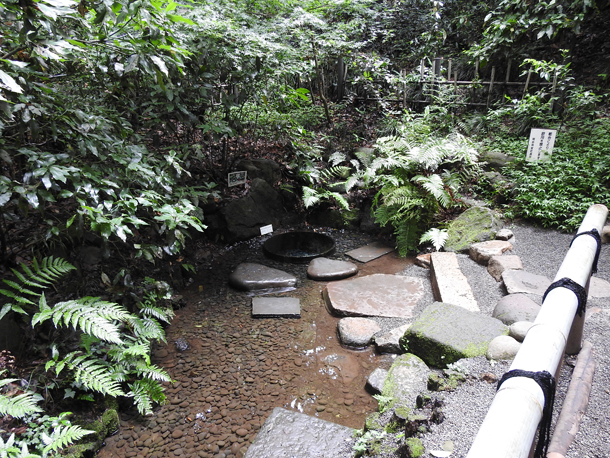 清 It is said that Kiyoshimasa Kato dug "Kiyomasai (Ikimasa no Ido)"
清 It is said that Kiyoshimasa Kato dug "Kiyomasai (Ikimasa no Ido)"
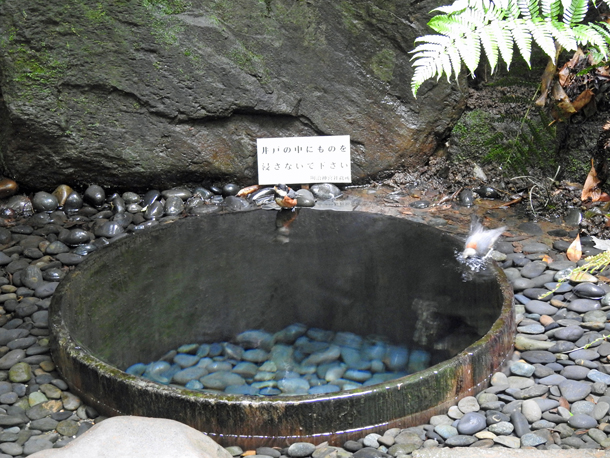 小 Little birds playing in Kiyomasai
小 Little birds playing in Kiyomasai
By the way, the water that filled the "Minamiike" then flows under "Brahms's small diameter", which is a culvert from Takeshita-dori, and joins as a part of the Shibuya River water source near Koda Shrine on Cat Street. doing. The Shibuya River has a strong image of the river, but its source is very clean spring water.
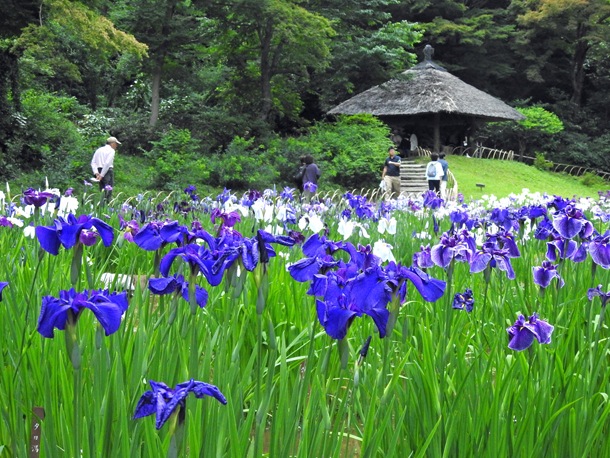 菖蒲 "Shibata" with colorful flowers blooming
菖蒲 "Shibata" with colorful flowers blooming
By the way, "Shibata" which "Kiyomasai" gets wet was planted for the Emperor Akinori by the Meiji Emperor in 1893 (Meiji 26). During the Edo period, the universe "Osozora", "Tsukumomi", "Senmeiho", etc., which were improved as breeds of the flower buds, were well-known as a breeder of flower buds. The 150 varieties of 150 varieties are planted here, with a focus on flowers called Edo.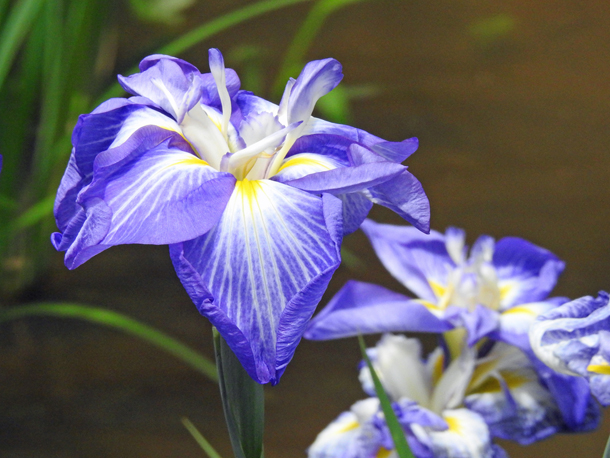 の 花 "Aosora" flower known as the famous flower of "Edo"
の 花 "Aosora" flower known as the famous flower of "Edo"
Flowers that bloom from late May to late June are just around the corner. According to an apple researcher, flowers that were 3,527 rings on June 11 (Wed) are counted 4,418 on Thursday, June 12, and the volume is increasing at a stretch. Colorful flowers, such as dark purple, pale purple, blue, pure white, and pink, are likely to peak this weekend.
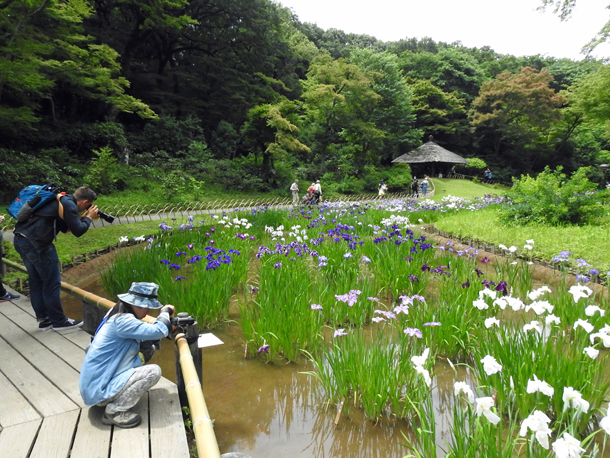 狙 い Aiming at the sunny interval of the rainy season, it was crowded with amateur photographers.
狙 い Aiming at the sunny interval of the rainy season, it was crowded with amateur photographers.
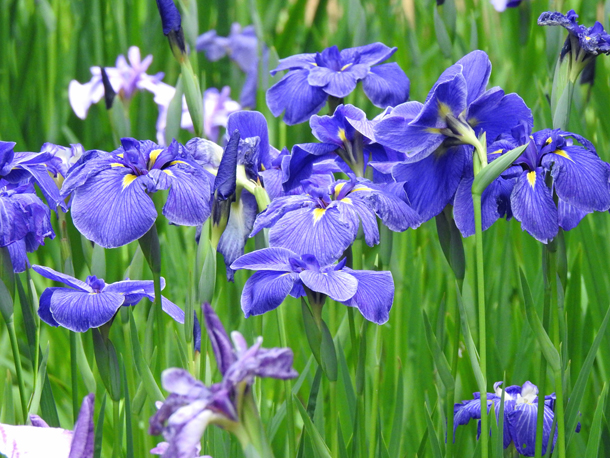 It is only in the rainy season that you can admire the flowers even in a year. On the 11th (Wednesday) I went to interview, the blue sky spreads between the rainy seasons, and Shibata was full of many domestic and foreign tourists, amateur photographers, and people who sketch the landscape.
It is only in the rainy season that you can admire the flowers even in a year. On the 11th (Wednesday) I went to interview, the blue sky spreads between the rainy seasons, and Shibata was full of many domestic and foreign tourists, amateur photographers, and people who sketch the landscape.
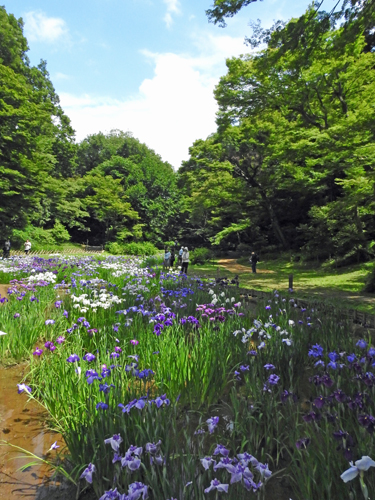 青 空 The blue sky spreads, and the sun shines on the flowers.
青 空 The blue sky spreads, and the sun shines on the flowers.
Then, let's look at the "South pond" adjacent to "Kamada". South Pond has a deck space called "Ochoudai", and it is said that the Meiji Emperor enjoyed fishing from here.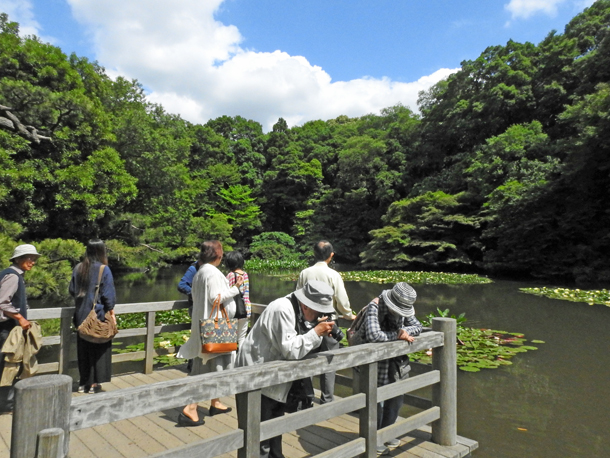 釣 "Nanchi" fishing platform
釣 "Nanchi" fishing platform
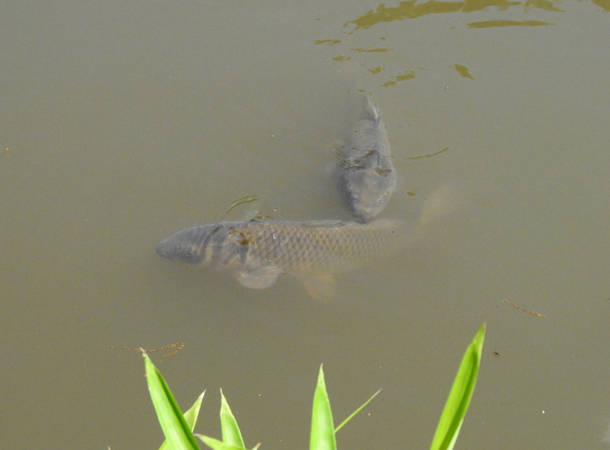 鯉 A big whale is swimming well.
鯉 A big whale is swimming well.
However, according to what I heard, there were episodes where I was unable to catch fish, and I managed to release fish and salmon in order to let the fish catch in the swallow. There are a lot of big whales swimming in the pond, and probably the whales that were released at that time would have grown and proliferated.
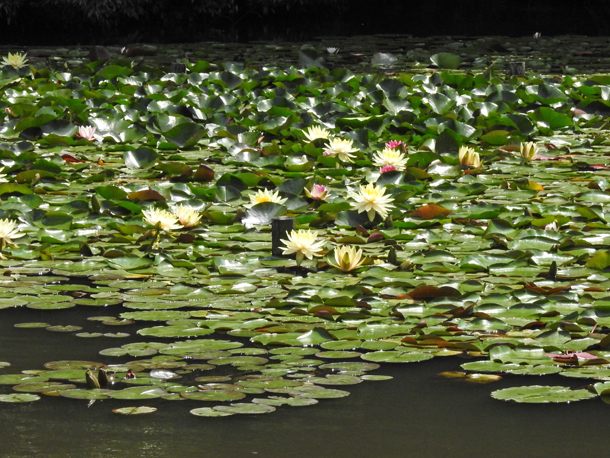 蓮 Lotus leaves are spreading on the water surface.
蓮 Lotus leaves are spreading on the water surface.
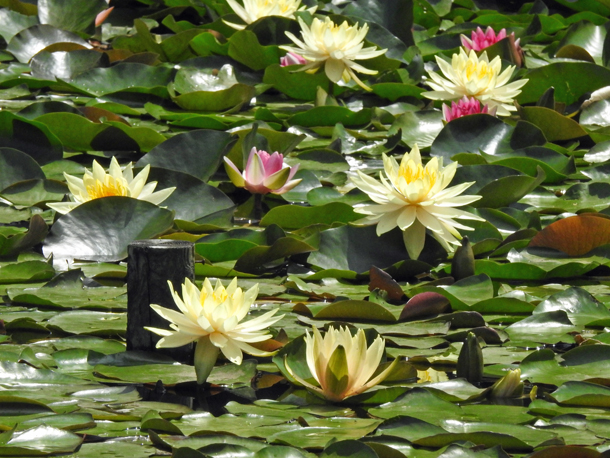 蓮 "Lotus flower" in the season
蓮 "Lotus flower" in the season
In addition, the lotus flower which is in the same season as the flower is blooming in the pond now. The large pink and white flowers are delicate and beautiful. It can be said that it is a photogenic flower.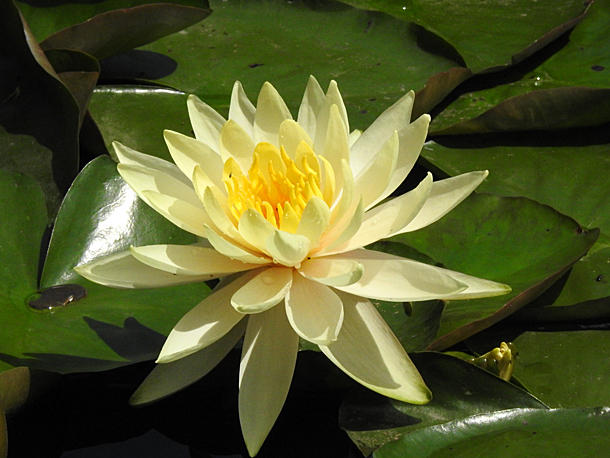 By the way, it is said that the lotus flower can be enjoyed by the end of August because the season is longer than the flower pot.
By the way, it is said that the lotus flower can be enjoyed by the end of August because the season is longer than the flower pot.
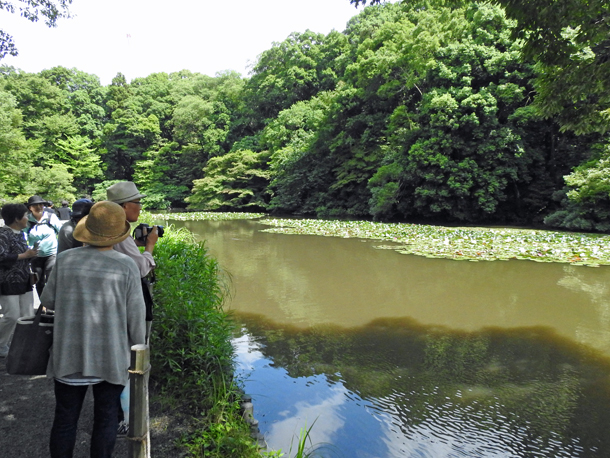 森 Forest of Musashino
森 Forest of Musashino
You can see the overgrown forest in the back of the pond. It is well known that Meiji Jinguno-mori is an "artificial forest" planted 100 years ago, but the mixed forest around the shrine is said to be a virgin forest that retains the image of Musashino. Originally from the Kato family, the Iya family's lower house, it was a land that had nothing to do with development, so unspoiled nature was left in the big city of Shibuya.
Even though you are in Tokyo, there are probably many people who have never visited here. Why not go out in a time when you can see both flowers and lotus flowers? The heart should be healed and calmed by the nostalgic scenery.
The arrival time during June is 8:00 to 17:00 (Saturday and Sunday until 18:00). The fee is 500 yen as Otaku maintenance cooperation money.
Meiji Jingu
http://www.meijijingu.or.jp/

Editorial department · Fuji Itakashi
Shibuya registrar. In addition to Shibuya of Culture information, seasonal news and topics, it will spell write that feel every day.

